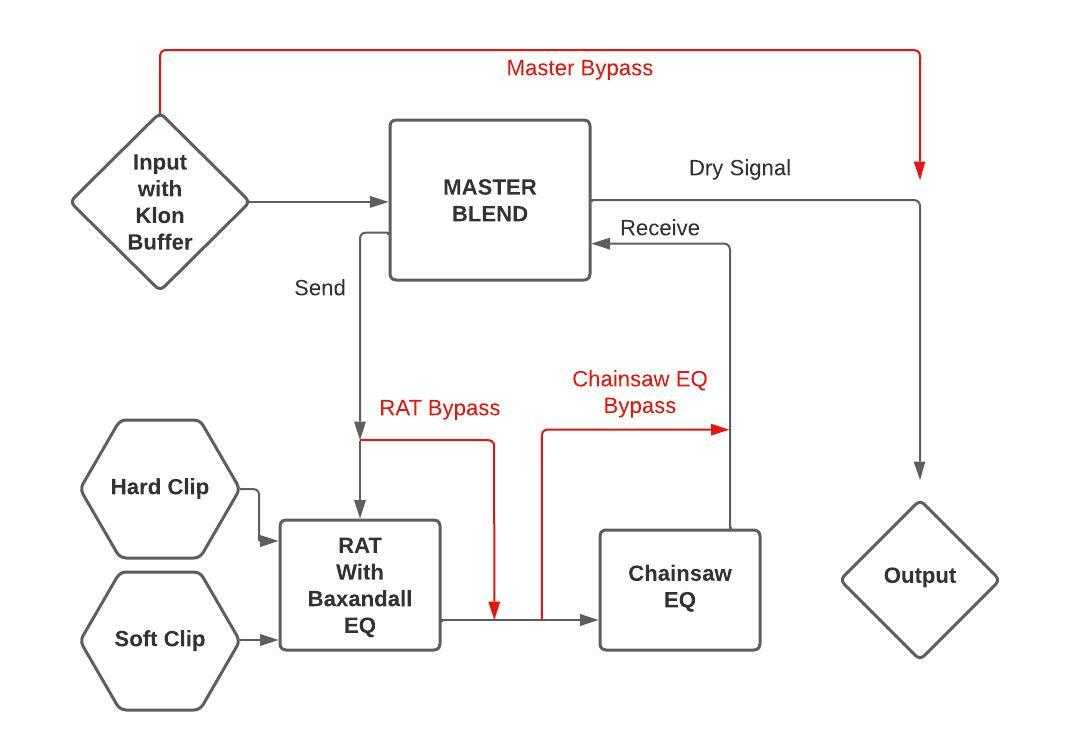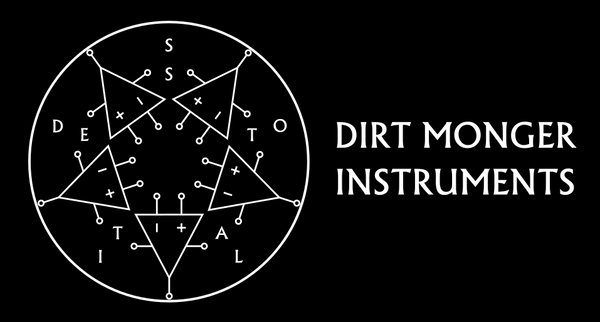
Necrotic Damage Version 2 progress report
Share

TLDR short story; Necrotic Damage version 2 is a modded Proco RAT that drives a modded HM-2 EQ for doom/death buzzsaw/chainsaw style tones. This pedal has a lot of extra features and mods compared to the first version. This is not a ‘nice tone’ sounding pedal, it’s nasty, slimy and harsh.
Full Story; Literally since the day the Necrotic damage was released in April 2020, a new version has been in the works. I have scrapped and reworked several prototypes over the last 2+ years as new concepts are learned and improvements are discovered.
The essence of the original Necrotic Damage is a Proco RAT in series with a modded HM-2 EQ with additional distortion clipping options, filter bypass, HM-2 bypass and a mid bypass.The second version has a massive amount of improvements and additions that make this pedal sound brutal as expected from the first version but also versatile enough to get tight doom tones and of course that classic RAT rock tone among lots of others in between.
For ease of use, there is a master bypass footswitch for the entire effect, a bypass footswitch just for the RAT circuit and a bypass footswitch for the HM-2 EQ. This footswitching allows players to use the RAT or HM-2 EQ independent of one another.
The pedal signal starts with a Klon style buffered bypass up front to correct any possible self oscillation at extreme settings and add signal integrity for large pedalboards. The buffer is tied into the circuit just before the master bypass footswitch so it always delivers a buffered signal whether or not the effect is on. From there the buffered input signal feeds into a master blend circuit with a phase inversion toggle to flip the signal 180 degrees, this is a great feature for bass players trying to blend dry/clean bass signal with the effect.
The send from the master blend feeds in the RAT which has significant mods, on the distortion circuit both Soft and Hard clipping with silicon, LED and off modes have been added to give the best and most significant clipping combinations. I didn't go as crazy with the clipping options on this one as I did with the Leviathan, I find the RAT doesn't respond to different types of clipping diodes and transistors the way that an HM-2 does, the subtlety of each diode escapes the RAT's opamp which 'breaks' around noon on the distortion knob giving almost any kind of clipping type a bassy fuzz sound. As a result of this bassy fuzz I chose the two most distinct sounding types (silicon and LED) with the option to turn them off if wanted.
A major improvement that the original RAT lacked is a proper tone stack instead of a low pass filter, this version includes a full range 4 band Baxandall EQ that allows for +/- 10 dB boost from 60Hz to 16kHz with a wide quadrature on each band to allow for a huge range of boost/cut to allow the EQ to play nice with almost any guitar amp. I've found the 'slow slew rate broken integrated circuit' sound of the RAT distortion gets very bass/fuzz heavy when turned past noon on the distortion knob, cutting back the lows and low mids of the baxandall EQ really helps to keep note definition while still getting that unmistakable buzzsaw wall of sound the RAT is known for.
Next in the signal chain is the 4 band HM-2 style EQ, this can be driven by the RAT distortion or any overdrive/distortion/fuzz pedal that a player prefers. You could even stack another dirt pedal in front of the necrotic damage with the RAT portion engaged to severely drive the pedal into chainsaw insanity. This EQ is based around the 100Hz and 1.2KHz bands with narrow Q values that make the HM-2 tone very distinct but it also bring mids around 800Hz and brights around 3.5KHz to give better tone variation than the original HM-2.
The previous version of the Necrotic Damage turned the HM-2 EQ off with a toggle but it was found very early on that being able to turn this off and on in a live situation is far more valuable so the toggle has been replaced with a footswitch.
